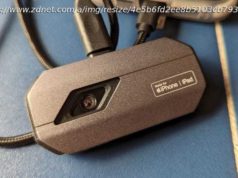The faster processor and larger sensor on the Galaxy S23 Ultra are not the improvements they seem. We break down the facts
The Galaxy S23 Ultra is the newest, most premium Android phone that you can buy, at least today. It has the fastest Snapdragon for Galaxy mobile platform, a whopping 200MP camera, and improvements throughout that make it a worthy upgrade, right? In fact, the Galaxy S23 Ultra is far from the upgrade that specs suggest, and it misses out on some easy opportunities to improve over last year.
Recent benchmarks show that the Galaxy S23 Ultra could be the fastest Android phone yet. That’s thanks to the special Snapdragon 8 Gen 2 for Galaxy chipset provided by Qualcomm. The Snapdragon inside the Galaxy S23 family is the fastest around, even faster than the OnePlus 11, which uses the same Gen 2 platform, but lacks the ‘for Galaxy’ designation.
What does being ‘for Galaxy’ get you? Not very much, it turns out. Inside the Snapdragon CPU are eight processing cores. The largest of these, the so-called ARM Cortex X-3 core, is five percent faster on a Galaxy phone. One core. Five percent.
That’s it. That’s the big advantage the Galaxy S23 has over other phones with the same generation of Qualcomm chips. Samsung gets an extra five percent on the fastest core. Is that a noticeable difference? Don’t make me laugh. The only way you would ever notice that the Galaxy S23 is faster is if you ran it through benchmarking software.
Phone performance is not a number, and if it were, the difference between the best and the second best would be a fraction of a fraction. Besides, there is more to the phone experience than benchmarks can tell us. Samsung is overhyping its special overclocked chip, even though the advantage it offers is nearly invisible.
Besides the new Qualcomm chipset, the other major upgrade on the Galaxy S23 Ultra is the new 200MP Samsung ISOCELL HP2 sensor. Last year’s sensor was only 108MP, and the iPhone 14 Pro can only manage a paltry 48MP. There’s no way a 48MP sensor can compete with a massive 200MP monster, right?
In fact, the sensor on the iPhone 14 Pro is the same size as the sensor on the Galaxy S23 Ultra, if not a tiny bit larger. The pixels themselves are very different, but the sensor inside the phone takes up the same space.
On the iPhone 14 Pro, you get a sensor with very large pixels. The 48MP sensor usually creates an image that is 12MP, so what actually happens is that every four pixels works together to create one final image pixel.
Home
United States
USA — software Is the Galaxy S23 Ultra overhyped? The real differences may surprise you






